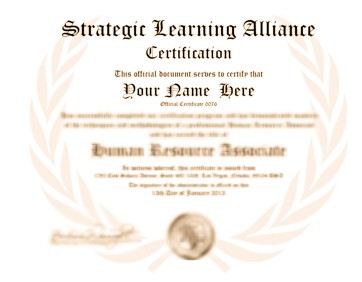Credentialing

Credentialing Administration
The Strategic Learning Alliance manages the licensure of
SLA accredited programs and administers 3rd party accreditation
and credentials for SLA applied professional certification programs
using a blend of subject matter expert guidelines for
business performance (Board of Advisors standards) as
well as academic merits to warrant conferral of AACSB
(top 15% schools of business) credits for applied professional
certifications (SLA Credentialing Committee standards).
These standards are researched, tested, and measured
in cooperation with the following institutions:
Association to Advance Collegiate Schools of Business (AACSB),
Human Resource Certification Institute (HRCI),
Society of Human Resource Management (SHRM),
SHRM College Consortium, and multiple research firms.
In addition, various college institutions sponsored SLA efforts
from 1979 to 2016 including:
- Boise State University,
- Seattle Pacific University,
- College of Development & Training, Ontario;
- University of Utah;
- University of Wisconsin;
- University of Washington;
- Capella University;
- University of Dubi;
- University of California;
- Oxford, Princeton, Harvard, and more.
Standards of Certification
Measurement of Success
Performance Requirements
Unlike other certifications that rely only on subject matter content and examination to ensure recipients demonstrate tested knowledge to be considered a top 20% performer, the SLA also requires a learning experience and performance based on the highest academic accreditation standards (courses must meet AASCB standards to be approved as an SLA program). This means that SLA candidates must meet tested, observed, and applied metrics to successfully earn certification through a learning program and simulated exam experience. The result is that candidates certified by the SLA have a 94% likelihood of professional success within a field (moving from non-exempt to exempt roles) but perform within the top 20% of a graduate-level course.3rd Party Accreditation
Learning Programs
Learning-based programs seeking 3rd party accreditation through the SLA must:
Board of Advisors
Each certification has a Professional Board of Advisors to set content requirements in their specific field.
The board members must all hold the highest business certification in their field AND/OR be approved faculty at AASCB (top 15% schools of business) colleges for the approved board of advisors positions they hold.
read more
